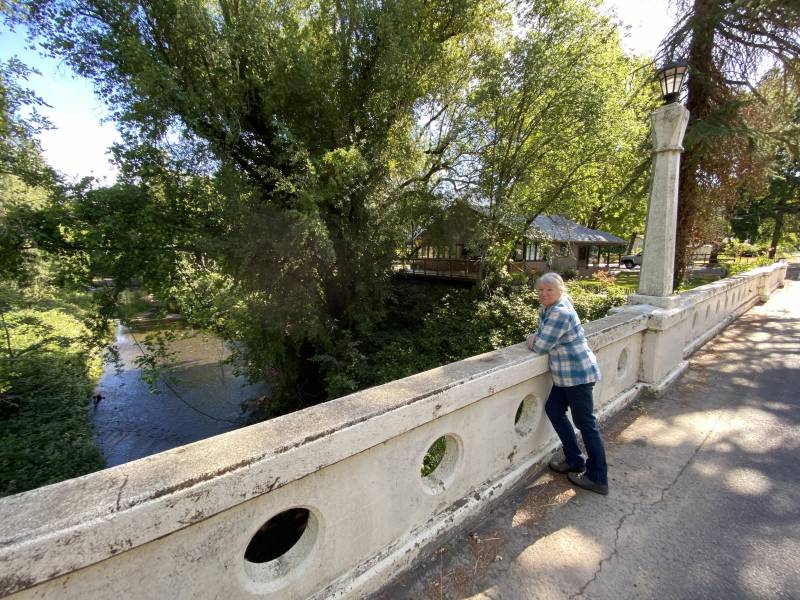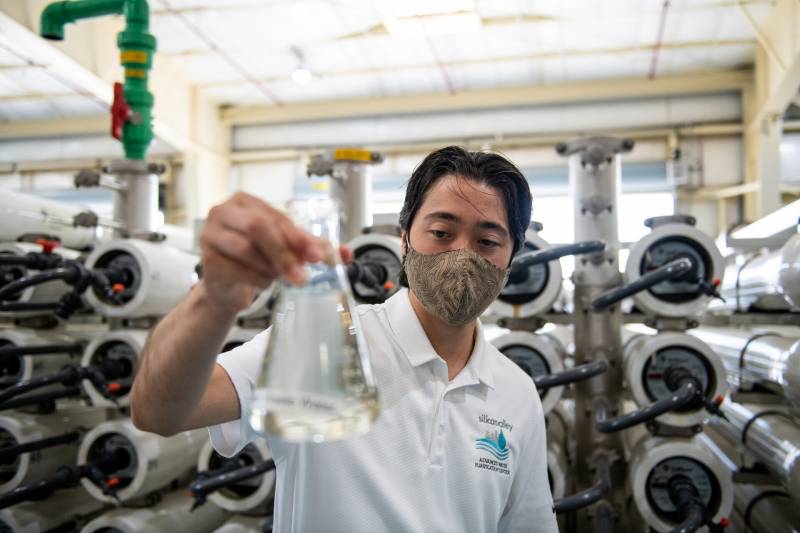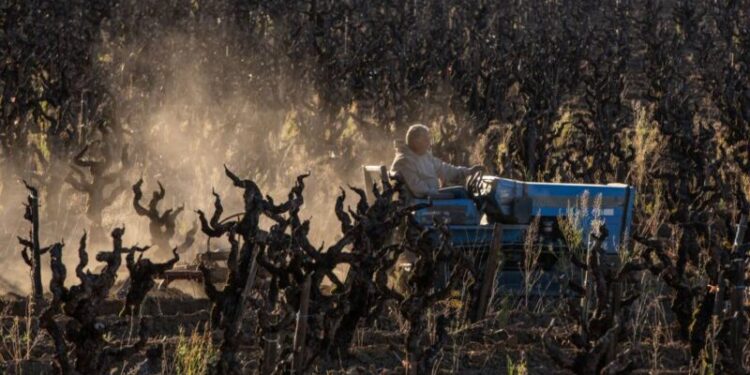“We have a huge hole we got to dig out of,” said Brad Sherwood, spokesperson for Sonoma Water. “It’s almost like Groundhog’s Day in the situation that we’re facing in Sonoma County.”
South of Sonoma, Marin County got a stroke of luck this past rainy season when two atmospheric rivers parked themselves over the county, dumping more than 40 inches of rain, said Adriane Mertens, spokesperson for Marin Water.
 Janet Pauli, with the Potter Valley Irrigation District, says farmers are already feeling the impacts of drought. (Ezra David Romero/KQED)
Janet Pauli, with the Potter Valley Irrigation District, says farmers are already feeling the impacts of drought. (Ezra David Romero/KQED)
Before those two brief, very wet storms, the county was contemplating emergency desalination or piping water from elsewhere over the Richmond-San Rafael Bridge. Now their reservoirs are filled to 91%, a two-year water supply, Mertens said.
“We were projecting to deplete our local reservoir supplies by summer of this year,” she said. “The rain was a gift.”
About 70 miles south of Marin in Santa Clara County, the drought scenario is more dire — and a lot dryer.
Water supplies for the South Bay are particularly precarious because local reservoirs are only a quarter full — the largest, Anderson Reservoir, is out of commission for seismic retrofitting for the next decade.
Officials expect that Valley Water, which supplies water to around 2 million people, won’t receive any of the imports it typically relies on, except for what’s absolutely necessary for health and safety.
Normally, more than half of the county’s water originates from the Sierra Nevada snowpack.
Valley Water put in place a 15% mandatory water restriction last June, but residents have not met the target, said John Varela, Valley Water chief pro tem.
“Since then, through January 2022, residents, businesses and farmers reduced overall water usage by only 8%,” he said.
Almost no measurable rain has landed on San Jose this year.
Water restrictions could intensify in Santa Clara County, said the water supplier’s spokesperson Matt Keller.
“We can hope for rain, but you know hope is not enough — we have to take action,” he said. “Everything is on the table heading into the summer.”
That could mean boosting mandatory water restrictions or increasing penalties for water wasters.
San Jose Water already charges residential customers $7.13 for each 748-gallon unit of water used over their limit, but the restrictions don’t apply to businesses. Ninety percent of the agency’s customers are residential, said Liann Walborsky, director of corporate communications.
“Mother Nature has not been very helpful,” she said of the lack of rain this winter. Customers used 2% more water in February than before the drought.
“We’re going in the wrong direction,” she said. “We’ve had people focus on outside irrigation. It’s very hard to cut water use inside your house because that starts to affect your quality of life.”
Nibbling around the edge
Restricting water and limiting flows to farms, parks or golf courses are quick ways to deal with the drought, but they are not long-term solutions. If restrictions are overused, they can lose their desired effect.
Water experts like Susan Leal say we need to stop nibbling around the edges and rethink how California and the Bay Area use water. Twelve years ago, she co-authored the book “Running Out of Water,” and raised remedies for the very crisis the state is in today.
“I believe we will still be able to deliver water to people, but they’ll have to use less of it,” she said. The climate whiplash the state experienced this past year — flooding rains followed by months of dry conditions — stresses the state’s water system, she said.
“We may get to the point where we have to start subsidizing water because the cost of recycled water is going to be much more expensive,” she added.
 Associate Engineer Zachary Helsley holds a beaker of treated wastewater at the Silicon Valley Advanced Water Purification Center in San Jose on Sept. 23, 2021. (Beth LeBerge/KQED)
Associate Engineer Zachary Helsley holds a beaker of treated wastewater at the Silicon Valley Advanced Water Purification Center in San Jose on Sept. 23, 2021. (Beth LeBerge/KQED)
Leal was once the general manager of the San Francisco Public Utilities Commission. She wants the state to invest billions in cleaning wastewater for drinking.
Recycled water encompasses only a small fraction of the state’s water supply; the majority is in Southern California. Valley Water pledged to double the amount of water it recycles over the next decade, but even that would only augment 10% of its supply.
“If we don’t actually put some dough into it now, it won’t happen,” Leal said.
It can take decades to change or build infrastructure.
Close the loop so we don’t depend on snowpack
Newsha Ajami studies water in the West as the chief development officer for research at the Earth and Environmental Sciences Area of Lawrence Berkeley National Laboratory. She says water agencies will have to start valuing people over a revenue based model.
“If we shift this mindset, eventually these utilities [will] survive these new realities they’re facing with climate change,” she said. “If they don’t, then eventually they will fall apart. Because every drought leads to a reduction in demand.”



















